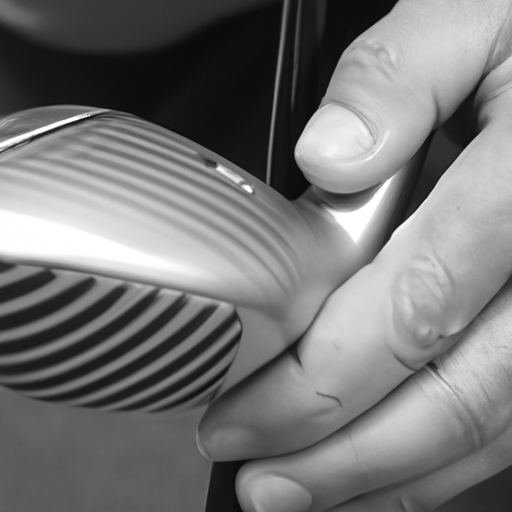Are you a beginner golfer or someone who has always been curious about the game? If so, you may have wondered whether golf is actually easy or not. In this article, we will explore the basics of golf and break them down for you, so you can get a better understanding of the sport. From understanding the swing and grip to mastering the art of putting, we’ll guide you through the fundamental aspects of golf and help you decide if it truly is an easy game to pick up. So, grab your clubs and let’s tee off into the world of golf!
Is Golf Easy: Breaking Down the Basics

Introduction
If you’re new to the game of golf, you might find yourself asking, “Is golf easy?” Well, the answer to that question is quite subjective. While some find golf to be an effortless and relaxing activity, others may be intimidated by its complexities. The key to understanding golf is breaking down the basics and mastering each fundamental aspect of the game. In this article, we will explore the fundamental elements of golf, ranging from grip and stance to putting and golf etiquette. By the end of this comprehensive guide, you’ll have a solid understanding of the foundational skills required to navigate the golf course with confidence.
The Fundamentals of Golf
Before we delve into the specifics, it’s important to understand that golf is a game of skill, concentration, and precision. It requires practice and patience to achieve the level of proficiency desired. By focusing on the following key fundamentals, you’ll soon be on your way to improving your golf game and having more fun on the course.
1. Grip
The grip is one of the most crucial aspects of a golfer’s technique. It determines how the clubface aligns with the ball at impact and affects the accuracy and power of your shots. There are different types of grips, such as the overlapping, interlocking, and baseball grips. Experimenting with each grip and finding the one that feels most comfortable and natural for you is essential. Remember to maintain a relaxed grip and avoid excessive tension, as it can hinder your swing.
2. Stance and Posture
Having a proper stance and posture is vital for maintaining balance and generating power throughout your swing. Start by standing with your feet shoulder-width apart and aligning your body parallel to the target line. Bend your knees slightly and tilt your upper body forward from the hips. Maintain a straight spine and keep your chin up. The weight distribution should be evenly balanced between your feet. With a correct stance and posture, you’ll be able to execute a more efficient swing.
3. Alignment
Accuracy in golf heavily relies on proper alignment. Aligning your body and clubface correctly helps ensure the ball will go in the desired direction. To achieve proper alignment, start by picking a target in line with your shot. Then, position your feet, hips, shoulders, and clubface parallel to the target line. Taking the time to align yourself accurately at address will greatly improve the consistency and accuracy of your shots.

4. Swing
The golf swing is the foundation of the game. Achieving a smooth and fluid swing motion requires practice and technique. Begin by gripping the club correctly and positioning your body in the proper stance. As you initiate the swing, focus on maintaining a balanced and rhythmic tempo. Keep your eye on the ball throughout the swing and follow through with a controlled finish. Working with a golf professional or instructor can be highly beneficial in honing your swing technique.
5. Putting
Putting is often considered the most important aspect of golf, as it accounts for a significant portion of strokes during a round. To excel in putting, start by positioning yourself parallel to the target line and aligning the putter face to your intended path. Focus on a pendulum-like motion, using your shoulders to control the swing rather than your hands and wrists. Maintaining a consistent stroke rhythm and practicing distance control are key factors in becoming a proficient putter.
6. Chipping
Chipping is a shot played from close to the green, usually with a higher-lofted club like a wedge or a short iron. The objective of a chip shot is to get the ball onto the green and close to the hole. To execute a successful chip, position the ball slightly back in your stance, lean the shaft of the club forward, and maintain a steady and controlled tempo throughout the stroke. Practicing different chip shots from various distances and lies will enhance your short game and save you valuable strokes.
7. Pitching
Pitching is a shot played from a greater distance than a chip, typically when you need to get the ball over an obstacle or land it softly on the green. It requires a more substantial swing and a higher-lofted club, such as a pitching wedge or a sand wedge. When pitching, focus on maintaining a smooth and accelerating swing motion, keeping your hands ahead of the clubhead at impact. Practicing different pitching distances and controlling your trajectory will greatly improve your ability to navigate challenging situations.
8. Bunker Shots
Bunker shots can be intimidating for many golfers, but with the right technique, they can become more manageable. When faced with a bunker shot, start by positioning the ball slightly forward in your stance and opening the face of the club. Dig your feet into the sand to establish a stable base and aim to strike the sand behind the ball, allowing the sand to lift the ball out of the bunker. Practicing bunker shots will help build your confidence and sharpen your skills in escaping these challenging situations.
9. Golf Clubs and Equipment
Understanding the different types of golf clubs and equipment is essential for optimizing your game. From drivers to irons, wedges to putters, each club serves a specific purpose and has unique characteristics. Experimenting with different clubs and understanding their capabilities will allow you to make more informed decisions on the course. It’s also crucial to ensure your equipment is properly fitted to your body type and swing characteristics, as this can greatly impact your performance.
10. Golf Etiquette
Golf etiquette is as important as technical skill in the game of golf. Respecting the course, fellow players, and maintaining a courteous demeanor are essential for an enjoyable golfing experience. Familiarize yourself with the basic etiquette practices, such as repairing divots and ball marks, keeping pace with the group ahead, and being mindful of noise and distractions. By adhering to golf etiquette, you’ll not only enhance your own experience but also contribute to a positive and respectful atmosphere on the course.
Conclusion
So, is golf easy? While it may not be easy initially, dedicating time to understanding and practicing the fundamentals of golf will undoubtedly make the game more accessible and enjoyable. By mastering the grip, stance, alignment, swing, putting, chipping, pitching, bunker shots, understanding the different clubs and equipment, and adhering to golf etiquette, you’ll be well on your way to becoming a competent golfer. Remember, golf is a journey that rewards persistence and patience, so don’t be discouraged by the occasional setback. Embrace the learning process, have fun, and appreciate the beauty of this remarkable game. Good luck!



